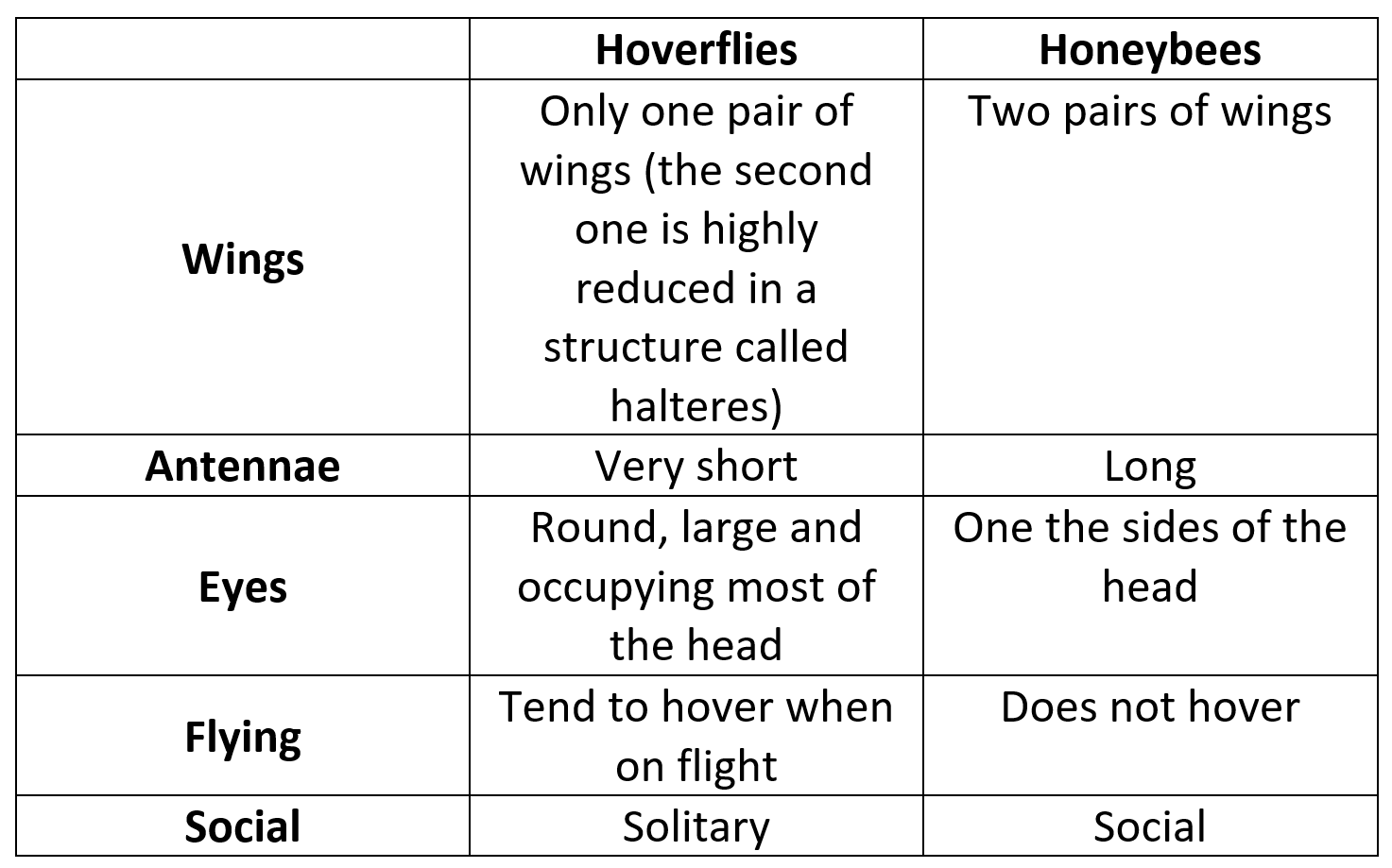Considered the most important pollinators in the world (LaSalle & Gauld, 1993), bees tend to take most of the pollinator limelight. However, there are dozens of other pollinators that don’t always get the attention they deserve. Such is the case of the hover flies - the small, underrated pollinators with a little quirk.
Hoverflies are insects that belong to the Syrphidae family, within the Diptera group. To some they are considered the second most important pollinator, after wild bees (Larsson, 2005). This is certainly the case in Australia, with our temperate and subtropical climate - the hoverflies work hard on winter pollinating flowers around Sydney.
But how do we recognise the hoverfly? While humans mimic the trends of the famous, the hoverfly gets its tips and tricks from better known pollinators - bees and wasps. Hoverflies that mimic honeybees have similar yellow and black stripes around their abdomen and visit flowers for food. But colour is not their only resemblance.. They also mimic the shape and fly movement of bees (Rashed, Khan, Dawson, Yack, & Sherratt, 2009; Waldbauer, 1970) - making them difficult to spot; unless you know what you’re looking for.
The hoverfly has developed these characteristics to warn their predators that they might sting just as bees do. Most predators learn how to associate colour patterns with pain, and in this case - the honeybee sting. The hoverfly protects itself with this warning colour, reducing its chance of being hunted by big predators.
So how do we tell honeybees and hoverflies apart?
Here are some basic clues on how to properly identify them:

Next time you go outside, keep your eyes peeled for insects on a flower. If you see a stripy pattern, a small antennae and only two wings we can be positive that it is a hoverfly! Help us protect this vital winter pollinator by not spraying pesticides in your garden - and spread word about how cool and important they are.

Hoverflies and honeybees resemble each other in many aspects. Both groups visit flowers for food, and have similar morphology, colours and behaviour. However, hoverflies only have two developed pairs of wings, hover when in flight and have very big round eyes. Honeybees are social, have two pairs of wings and have their eyes on the side of their heads. A, B and C are different species of hoverflies in Sydney (all visiting flowers for nectar and pollen). Images D and E are honeybees (Apis cerana) showing their social behaviour (D) and floral visitation for nectar and pollen (E). Pictures by Francisco Garcia Bulle Bueno
References:
- Larsson, M. (2005). Higher pollinator effectiveness by specialist than generalist flower-visitors of unspecialized Knautia arvensis (Dipsacaceae). Oecologia, 146(3), 394-403.
- LaSalle, J., & Gauld, I. (1993). Hymenoptera: their biodiversity, and their impact on the diversity of other organisms. Hymenoptera and biodiversity., 1-26.
- Rashed, A., Khan, M., Dawson, J. W., Yack, J., & Sherratt, T. N. (2009). Do hoverflies (Diptera: Syrphidae) sound like the Hymenoptera they morphologically resemble? Behavioral Ecology, 20(2), 396-402.
- Waldbauer, G. (1970). Mimicry of hymenopteran antennae by Syrphidae. Psyche, 77(1), 45-49.

